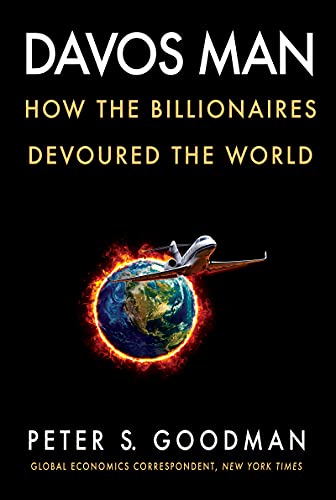At the video, just after 10 seconds, the car was spared a direct hit, but the blast-shrapnel ignited the gas tank and blew up the vehicle. Pretty rad actually, though bummer for the occupants. That's definitely called being in the wrong place at the wrong time.
At the Wall Street Journal, "Russian officials blame Kyiv; Ukrainian officials have repeatedly threatened to hit the 12-mile bridge":
A major explosion on Saturday severely damaged the bridge connecting Russia’s mainland to the occupied Crimean Peninsula, disrupting traffic on a crucial artery for the supply of fuel, military equipment and food to Russian troops fighting to hold ground in southern Ukraine. The bridge, opened by President Vladimir Putin to great fanfare in 2018, was meant to symbolize the might of the Russian state and the permanence of Russia’s annexation of the peninsula four years earlier. Russia even released a feature movie about its construction. Russia’s investigations committee said three people died after the early-morning explosion of a truck on the bridge’s roadway next to a supply train that was carrying fuel. Mr. Putin signed a decree requiring the boosting of defenses for Crimean transportation and energy infrastructure links. The decree placed the country’s intelligence service, FSB, in charge of the measures. Sergey Aksyonov, the Russian-appointed leader of Crimea, raised the terrorism alert level to high through Oct. 23. Some demolition experts who analyzed footage of the blast questioned the Russian version and said that the explosion must have come from under the bridge, caused either by an explosives-laden boat, manned or unmanned, or by shaped charges placed by divers. Tony Spamer, a former British Army expert on bridge demolitions, said a truck bomb would have created a hole in the middle of bridge but wouldn’t have been sufficient to cut the reinforcing bar and cause the structure to collapse. “You’ve got to attack the whole width of the bridge. Looking at it, it looks like it was attacked from underneath. It’s a monster job,” he said. Russia rushed to launch ferry services as an alternative, a move made difficult by stormy weather. Crimean authorities said passenger traffic resumed Saturday afternoon on the two surviving lanes of the four-lane road bridge, and rail services should be restarted soon. Civilian flights to Crimea have been suspended since February. David MacKenzie, a senior technical director at COWI Holding A/S, a Denmark-based company that designs and builds some of the world’s largest and longest bridges, said it would take several months for Russia to be able to fully restore the destroyed spans of the bridge, and that the ban on truck traffic is caused by concerns that the bridge’s substructure has also been damaged. Weight restrictions are likely to be imposed on the railway bridge should it reopen, he said. “A quite significant fire has taken place, and it will have an impact on the strength of the steel that is there,” Mr. MacKenzie said. “There is a very good chance that the steel on the top of the deck may well have been heated to temperatures well above the limits that the steel takes.” Russian officials in Crimea were quick to blame Kyiv. “The Ukrainian vandals have managed to reach the Crimean bridge with their bloodied hands,” the speaker of Crimea’s legislature, Vladimir Konstantinov, wrote on social media. Other than ordering a commission of inquiry, Mr. Putin has so far remained silent on the incident, even as Russian lawmakers and politicians called for retribution. While Ukrainian officials have threatened to hit the strategic bridge in the past, there was no direct claim of responsibility from Kyiv. Senior Ukrainian officials, however, on Saturday expressed delight at the blow to Russian prestige. Alluding to Mr. Putin’s 70th birthday on Friday, Ukraine’s national-security adviser Oleksiy Danilov posted a video online of the burning bridge next to footage of Marilyn Monroe singing, “Happy birthday, Mr. President.” Russia’s annexation of Crimea in 2014 is considered illegal by virtually the entire international community, and Ukrainian President Volodymyr Zelensky has repeatedly said that he seeks to reclaim all Ukrainian territories seized by Russia. Russia in recent days moved to annex four other regions of Ukraine where fierce fighting continues, while Mr. Putin ordered the mobilization of hundreds of thousands of reservists to shore up the crumbling Russian front lines, prompting an exodus of Russian men to neighboring countries. Moscow on Saturday for the first time named an overall commander for the faltering campaign in Ukraine, Gen. Sergei Surovikin. Previously the head of Russia’s Aerospace Forces, he was this summer identified by the Russian Ministry of Defense as head of Group South, the military grouping that led the fighting to seize the southeastern city of Mariupol. He is a veteran of the Chechen campaign and a former commander of Russian forces in Syria. Russian nationalists and personalities such as Chechen leader Ramzan Kadyrov and Yevgeni Prigozhin, owner of the Wagner private military company, have blamed a rival general, Col. Gen. Aleksandr Lapin, commander of Group Center, for recent defeats that saw Russia lose thousands of square miles in the Kharkiv, Donetsk and Luhansk regions. There was no word about Gen. Lapin’s fate. Crimea, the home of Russia’s Black Sea fleet, has also become a focus for the Ukrainian war effort as its forces press farther south, especially in Kherson, where dozens of villages have been taken in recent days. Kyiv has attacked several high-profile targets in Crimea in recent months, striking a major Russian air base in Saky and a railway junction near the town of Dzhankoy. It has used American-made Himars missiles to hit the Antonivsky bridge in Kherson, a lifeline for Russian troops in the area. The bridge over the Kerch Strait accounted for the bulk of fuel and food supplies to Crimea and represented the only way of traveling to and from the peninsula for ordinary Russians...




